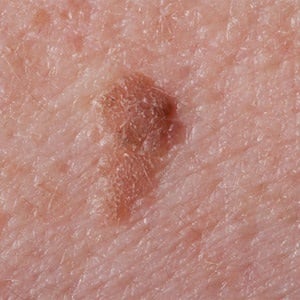
For most people liver spots are largely a cosmetic issue, but the unsightly marks, frequently associated with ageing, can on occasion be an indicator of skin cancer and for this reason should be checked by a doctor.
Liver spots occur on parts of the skin that have had greater and more frequent exposure to sunlight, such as the face, hands and arms. While more common in the elderly, they can occur in those as young as 40. "There are various ways of treating them based on the number and colour of the spots," says Christiane Bayerl, a German professor of dermatology.
She stresses that the possibility of skin cancer must be investigated. "This aspect is often underestimated. For this reason it is essential to do a biopsy to exclude the chance that malignant cells are present."
"The spots on the face can of course be covered with heavy make-up and sometimes a heavy mineral foundation is sufficient," says German cosmetics expert Renate Donath. But she acknowledges that men do not like this kind of procedure, while women want to be rid of the spots completely.
In the first instance, whitening creams freely available at pharmacies may be used, although their use is limited usually to two months or so for fear of damaging the skin. A simple peeling using alpha hydroxy acids may be sufficient in some cases in which the discolouration is superficial, even if highly noticeable. But this treatment does have its hazards.
What the experts say
Dermatologist Uta Schlossberger says: "Incorrect application and going out again into the sun too soon afterwards can lead to infection and scarring, as the skin is then very sensitive."
When the pigmentation goes deeper, laser treatment is recommended. "The laser causes the pigment deposits to burst and the body carries the particles away. It's a really simple process," Schlossberger says.
But it should definitely not be used in the case of malignant pigmentation, as this then causes the cells to be transported around the body. The treatment causes minor discomfort and some inflammation. The patient is required to stay out of direct sunlight for eight weeks, as the skin is sensitive.
Pigmentation can also be removed by Intense Pulsed Light therapy, which subjects the superfluous pigment to high energy light. The melanin in the skin absorbs the light, converting it to heat and thus destroying the cell structure of the liver spots. "This treatment must be carried out by experts, as incorrect application can lead to burns," Bayerl says.
(Sapa, October 2012)
Read more:
Anxiety tied to premature ageing




 Publications
Publications
 Partners
Partners














